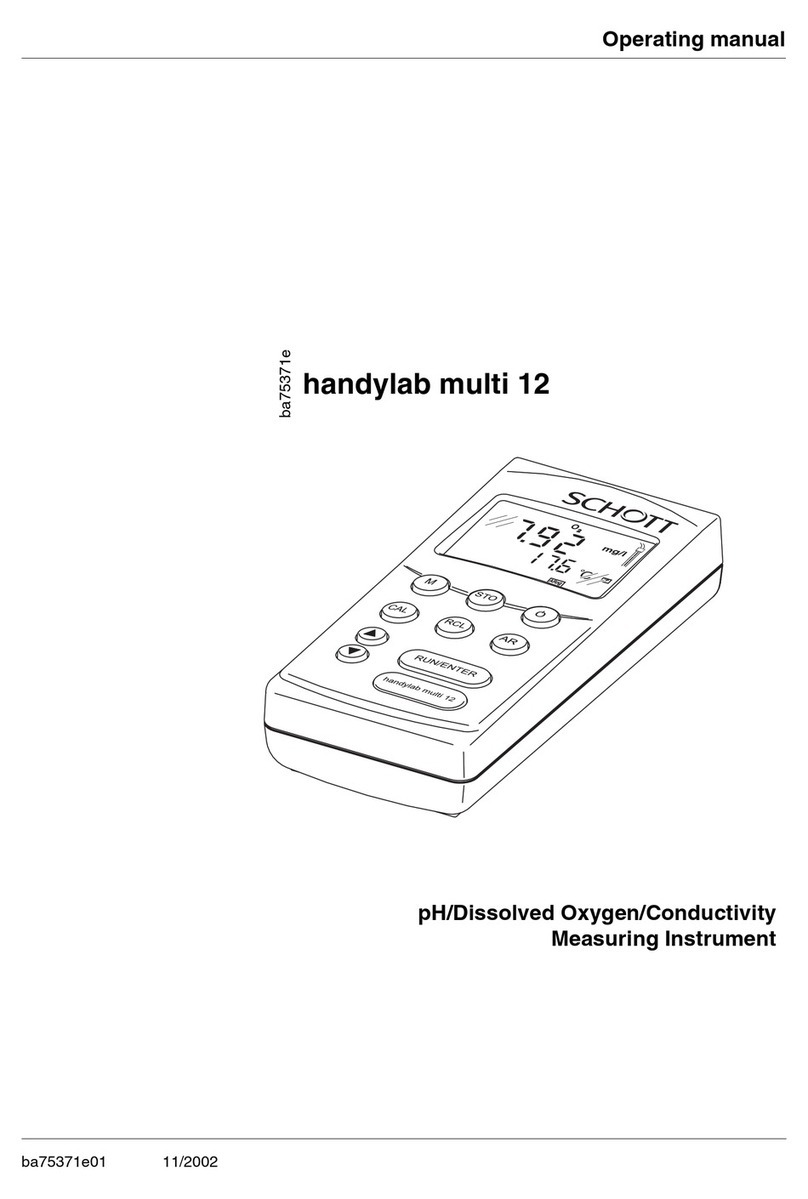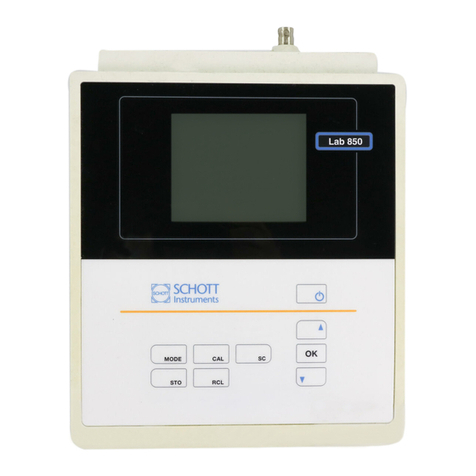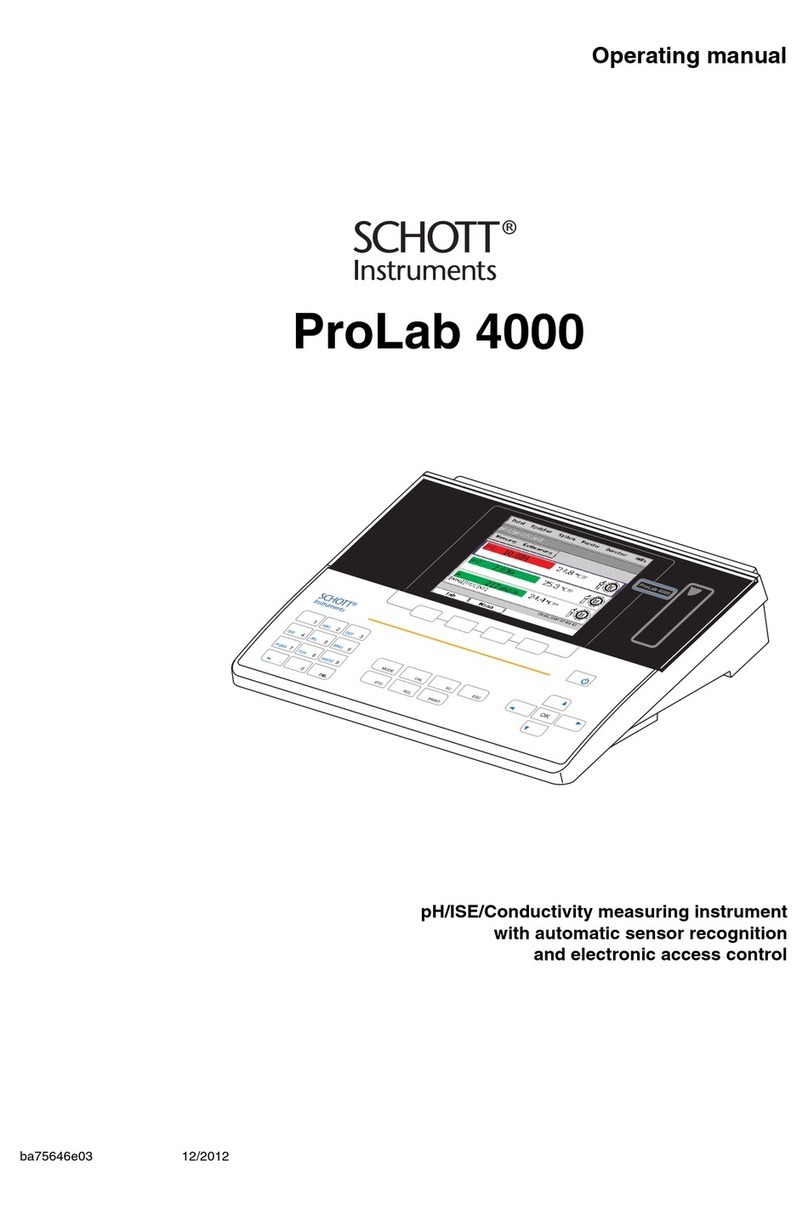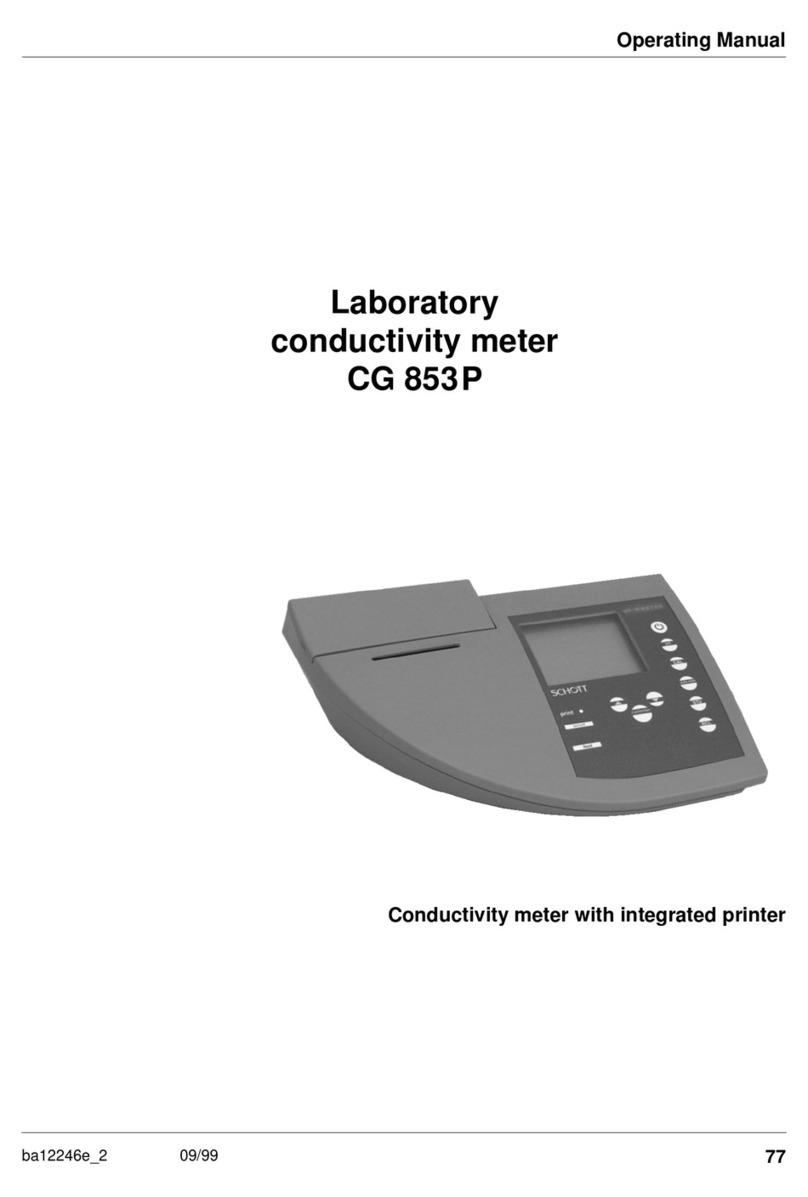handylab pH 11 List of contents
3
handylab pH 11 - List of contents
ba75366e04 01/2011
1 Overview . . . . . . . . . . . . . . . . . . . . . . . . . . . . . . . . . . . . . . . . . 5
1.1 Keypad . . . . . . . . . . . . . . . . . . . . . . . . . . . . . . . . . . . . . . . . . . . 6
1.2 Display . . . . . . . . . . . . . . . . . . . . . . . . . . . . . . . . . . . . . . . . . . . . 7
1.3 Jack field . . . . . . . . . . . . . . . . . . . . . . . . . . . . . . . . . . . . . . . . . . 7
1.4 Technical Data . . . . . . . . . . . . . . . . . . . . . . . . . . . . . . . . . . . . . 8
2 Safety . . . . . . . . . . . . . . . . . . . . . . . . . . . . . . . . . . . . . . . . . . . 11
2.1 Authorized use . . . . . . . . . . . . . . . . . . . . . . . . . . . . . . . . . . . . 11
2.2 General safety instructions . . . . . . . . . . . . . . . . . . . . . . . . . . . 12
3 Commissioning . . . . . . . . . . . . . . . . . . . . . . . . . . . . . . . . . . . 13
3.1 Scope of delivery . . . . . . . . . . . . . . . . . . . . . . . . . . . . . . . . . . . 13
4 Operation . . . . . . . . . . . . . . . . . . . . . . . . . . . . . . . . . . . . . . . . 15
4.1 Switching on the measuring instrument . . . . . . . . . . . . . . . . . 15
4.2 Measuring . . . . . . . . . . . . . . . . . . . . . . . . . . . . . . . . . . . . . . . . 16
4.2.1 General information . . . . . . . . . . . . . . . . . . . . . . . . . . 16
4.2.2 Measuring the pH value . . . . . . . . . . . . . . . . . . . . . . . 17
4.2.3 Measuring the ORP voltage . . . . . . . . . . . . . . . . . . . . 18
4.3 Calibrating . . . . . . . . . . . . . . . . . . . . . . . . . . . . . . . . . . . . . . . . 19
4.3.1 AutoCal TEC . . . . . . . . . . . . . . . . . . . . . . . . . . . . . . . 21
4.3.2 AutoCal DIN . . . . . . . . . . . . . . . . . . . . . . . . . . . . . . . . 25
4.3.3 ConCal . . . . . . . . . . . . . . . . . . . . . . . . . . . . . . . . . . . . 29
4.4 Configuration . . . . . . . . . . . . . . . . . . . . . . . . . . . . . . . . . . . . . . 32
4.5 Reset . . . . . . . . . . . . . . . . . . . . . . . . . . . . . . . . . . . . . . . . . . . 34
5 Maintenance, cleaning, disposal . . . . . . . . . . . . . . . . . . . . . 35
5.1 Maintenance . . . . . . . . . . . . . . . . . . . . . . . . . . . . . . . . . . . . . . 35
5.2 Cleaning . . . . . . . . . . . . . . . . . . . . . . . . . . . . . . . . . . . . . . . . . 36
5.3 Disposal . . . . . . . . . . . . . . . . . . . . . . . . . . . . . . . . . . . . . . . . . . 36
6 What to do if... . . . . . . . . . . . . . . . . . . . . . . . . . . . . . . . . . . . . 37
7 Lists . . . . . . . . . . . . . . . . . . . . . . . . . . . . . . . . . . . . . . . . . . . . 41


































